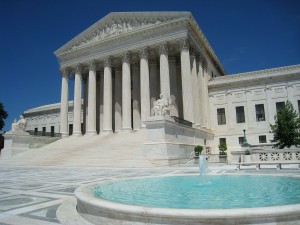Top Federal Crime Lawyer: Specialized Legal Protection for Federal Offenses
Debunking the Process of Federal Appeals: What You Required to Know
Navigating the elaborate realm of federal charms can usually appear like passing through undiscovered waters for those unknown with the procedure. Recognizing the nuances of appellate court territory, the intricacies of filing a notification of allure, providing a compelling short, and making a convincing dental argument are crucial elements that can considerably affect the outcome of a case. By unraveling the layers of complexity bordering federal allures, individuals can get a clearer understanding right into the systems that regulate this critical point of the legal system.
Comprehending Federal Appeals Refine
Exploring the detailed realm of the government allures procedure introduces a structured and methodical trip via the judicial system - top nebraska federal appeals lawyers. Federal appeals work as an essential device for evaluating decisions made by reduced courts. Recognizing this procedure is crucial for any individual included in lawful process at the federal degree
The procedure generally begins with a party disappointed with a lower court's judgment submitting a notice of allure. This sets off a review by a greater court, where a panel of judges assesses the lawful debates presented by both events. Briefs outlining the legal reasoning behind each celebration's placement are submitted, and oral disagreements may be heard to clarify complicated problems.
The appellate court's decision is based upon an extensive assessment of the reduced court's process and the arguments presented. The judges do not concentrate yet reexamine truths on whether lawful errors took place that affected the reduced court's decision. Once the appellate court reaches a choice, it can attest, reverse, remand, or change the lower court's ruling, offering clearness and finality to the legal conflict. Comprehending this procedure is essential for navigating the complexities of federal allures efficiently.
Appellate Court Territory Described

Appellate courts have jurisdiction over particular sorts of instances, typically those involving legal mistakes, step-by-step issues, or concerns of legislation instead than factual conflicts. The territory of appellate courts is usually laid out in statutes and laws that govern the court system. Understanding appellate court jurisdiction is vital for events associated with the charms procedure as it identifies whether a case is qualified for testimonial and the level to which the appellate court can intervene in the lower court's choice.
Filing a Notice of Appeal
The initial action in starting the government appeals process involves filing a Notification of Allure with the ideal appellate court. montana federal appeal lawyers. This vital file formally alerts the court and the other parties associated with the instance that the appealing celebration plans to seek a testimonial of the lower court's decision. Submitting a Notice of Appeal is a stringent step-by-step demand that sets the appellate procedure moving
When preparing the Notification of Appeal, it is necessary to ensure conformity with the specific regulations and standards of the relevant appellate court. The paper must normally include information such as the situation name, the lower court's name, the date of the judgment being appealed, and a succinct declaration indicating the grounds for the charm.
When submitting a Notice of Appeal,Timeliness is of the significance. Missing out on the deadline for submitting this paper can cause the appeal being rejected, emphasizing the importance of prompt and precise initiation of the appeals process. It is a good idea to look for lawful advice to navigate the complexities of submitting a Notice of Charm successfully.
Instruction and Dental Argument
In the appellate process, providing composed briefs and taking part in dental debates play pivotal roles in advocating for the appealing celebration's setting prior to the appellate court. Briefs are detailed lawful records that describe the celebrations' debates, lawful authorities, and evaluation sustaining their positions. These written submissions offer the court with an in-depth understanding of the truths of the situation, the appropriate legislation, and why the appealing celebration believes the lower court's decision ought to be rescinded.
Adhering to the entry and evaluation of the briefs, dental disagreements provide the celebrations a chance to additional clarify their settings, attend to any type of concerns the appellate courts may have, and highlight vital factors from their written briefs. Oral disagreements are an opportunity for the attorneys to encourage the judges through verbal advocacy and responses to queries from the bench.

Obtaining the Appellate Court Decision

Conclusion
Comprehending the appellate court jurisdiction, submitting a notice of allure, preparing briefs, and presenting oral debates are all crucial elements of this procedure. Inevitably, receiving the appellate court choice can provide clarity and resolution to legal disagreements.
As we progress from comprehending the federal allures process to exploring the details of appellate court territory, a fundamental element comes to light relating to the authority and restrictions of these higher courts in the lawful landscape. Appellate court jurisdiction refers to the range of situations that a certain appellate court has the power to review and choose upon. Unlike trial courts that listen to cases for the first time, appellate courts are limited to examining choices made by lower courts. Understanding appellate court jurisdiction is vital for celebrations involved in the charms procedure as it figures out whether a case is eligible for testimonial and the degree to which the appellate court can interfere in the lower court's choice.
Whether the appellate court attests, turns around, or remands the lower court's choice, recognizing the effects of the judgment is important for all parties entailed in the best federal appeals attorneys virginia appellate process.